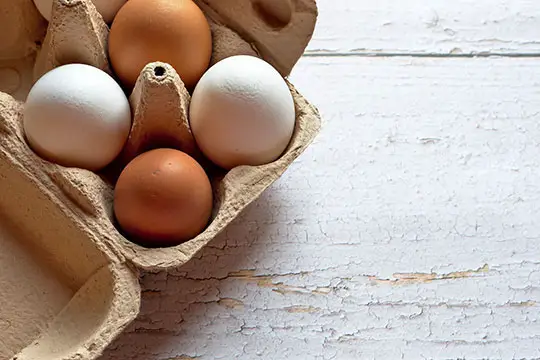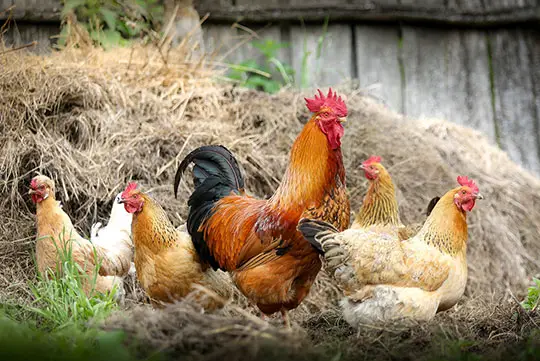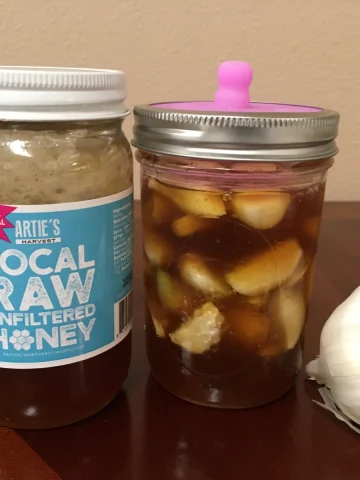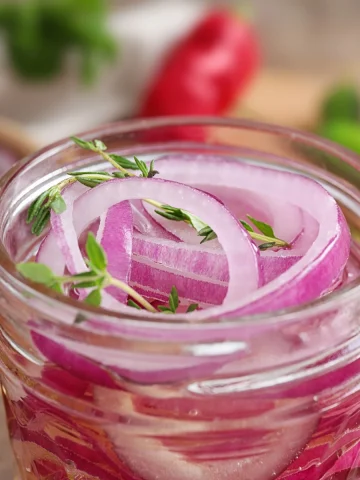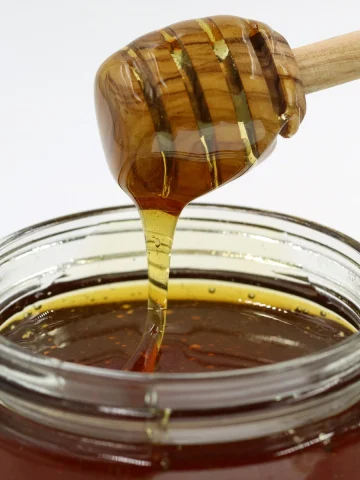How to Ferment Chicken Feed for Healthy Hens & Eggs
Whether you are looking to cut down on feed expenses, improve your chickens' health, or ways to help them lay more eggs, fermenting your own chicken feed can be an innovative practice to possess.
In this ultimate guide to making fermented chicken feed, you will learn everything you need to know about how fermented chicken feed improves the hens' health and the eggs they hay.
Benefits of Fermented Chicken Feed
- Save Money
- Improve Gut Health
- Improve Digestion and absorption of nutrients in the food
- Less chicken poop to clean up!
How Does Fermenting Chicken Feed Work?
Fermenting chicken feed adds probiotics to a chicken's diet. It's a wet mash created by lactic acid fermentation, just like sauerkraut, kimchi, and kombucha.
Like these popular fermented foods, it contains all the bacteria that are good for your gut: Lactobacillus, Leuconostoc, Pediococcus, and other beneficial bacteria and yeasts.
This is because of the anaerobic process of 'Lacto-fermentation,' which allows a beneficial live bacteria called 'lactobacillus' to grow.
Lactobacillus is known for its benefits to gut health, where it balances out the stomach's acidity and, in turn, allows the gut to digest and absorb nutrients more efficiently.
This is why anyone who owns chickens should consider fermenting chicken feed.
Fermenting chicken feed will help you save money and offer a range of health benefits for the flock. This is because the nutrients in fermented feed become more readily available and more accessible for the hens to absorb, resulting in the chickens potentially eating up to 20% less than dry feed.
When you ferment chicken feed, it changes the feed slightly. We have already touched on how it allows the bacteria lactobacillus to grow, which is one of the significant changes with fermented feed.
It also makes the food much easier to digest, as the fermentation process reduces the 'phytic acid' and 'enzyme inhibitors,' which are found in various chicken feed such as legumes, seeds, and grain, thus maximizing the nutritional absorption.
According to a 2009 study, the fermented chicken feed can lead the hens to:
- Producing better eggs (Higher weight and thicker shells)
- The feeding of fermented feed increases intestinal health by acidification of the upper digestive tract, forming a natural barrier toward infection with acid-sensitive pathogens, e.g., E. coli, Salmonella, and Campylobacter. (source)
The study also noted that hens being fed fermented feed produced less waste than the hens on dry feed; this is likely because the birds eat less overall but absorb more thanks to the nutrients being easier to digest.
Mixing Your Own Fermented Chicken Feed
Many would assume that the process is complex and time-consuming, with all the benefits of using fermented chicken feed for hens. But it is surprisingly simple and takes minimal resources, time, and space, even with larger flocks.
There are three main components when looking to ferment chicken feed.
The first step for anyone looking to ferment their chicken feed is deciding on the type of feed to use. Fermentation works well with grains, seeds, legumes, oats, crumble, pellets, or a mix of several. So whichever is preferred or readily available should work just fine.
The next step is finding a suitable container made from a material that will not be affected by the acidic process of fermenting. Glass jars and ceramic pots are perfect. But if neither is available, then a BPA-free plastic container will do the trick in a pinch.
Not only does the container have to resist the acidity of the fermented feed it also needs to be big enough to fit the grain and water and still have room for it all to expand.
The last step is to find a location for the fermentation process to happen. The container should be kept at a consistent, slightly warm temperature. The temperature must not fluctuate as this can upset the fermentation.
Cupboards, sheds, and other places out of direct sunlight are great options for storing the feed and help with keeping it out of the way.
How Much To Fermented Feed Per Chicken?
Generally, a chicken will consume around ¼ of a cup of feed daily. However, once the feed is fermented, chickens will consume less than that amount daily. But keep in mind chickens will consume feed all day if offered.
Start by fermenting ¼ cup of feed per bird. Just do one batch, and see how it goes. See how much is leftover. Feed the leftover the next day (it shouldn't be bad yet). This will keep you from fermenting way too much to start and potentially wasting feed.
Next, you could ferment 25%-30% less than what they would typically eat. Feed it in the morning feeding. If the bowl is empty in the afternoon, you can throw the chickens a scoop of dry feed and/or scratch, and you will know that you haven't made enough, and you should make a little more in your next batch.
Likewise, if there's still some in the bowl, you know you can probably ferment a little less next time.
How To Make Fermented Chicken Feed
1: Mix Feed and Water
Mix the chosen chicken feed and fresh water into a glass or ceramic container at a ratio of 1:1.2/1.5
The water should cover the mixture by two or three inches when done. Close the lid.
2: Let the Mix Ferment
Place the container in a safe location, out of direct sunlight. The container should be kept at a steady temperature.
Check on the fermented feed 2-3 times a day, topping off with water if absorbed and stirring regularly to ensure that all grains touch the brine.
3: Drain and Feed The Chickens
After 3-4 days, the feed should begin to have bubbles when stirred; this is a good sign as it shows fermentation.
Feed the flock by scooping the mix out with a strainer or slotted spoon and let the liquid drain back into the fermentation container.
The process should take approximately three or four days and should not be kept any longer.
After the fourth day of fermenting, the mix will become too sour and unpleasant, and it is unlikely that the hens will refuse to eat it after this point.
Throughout the process, throw the mix away and start again if there are any signs of mold, pests, or a strong sour or yeast smell. While a slightly sour smell is typical, it should not smell any worse than sourdough, and if it does, the mixture has gone bad and should be tossed out.
Tips And Tricks For Fermenting Chicken Feed
Here are some additional tips and tricks to help people get the most out of their fermented chicken feed.
How Often To Feed Fermented Chicken Feed
Fermenting chicken feed at home is a simple and efficient way of helping hens get the most out of their food. How often the feed should be used is entirely up to the individual. Some owners use fermented feed multiple times weekly, while others reserve it as a treat.
However regularly you feed, it is always a good idea to consider using it if any flock is looking under the weather or going through a molt. The added nutrition hens will get from fermented feed can give them a much-needed boost when going through health-related issues.
The Best Containers To Use
As mentioned earlier, glass or ceramic containers are the best containers. It is even possible to use fermentation crock for the feed if they are large enough to hold food for the entire flock.
Popular options include mason jars, which come in various sizes and typically have lids.
Use The Right Type Of Water
Always use dechlorinated water when fermenting chicken feed. A cheap way to dechlorinate water at home is to let tap water sit for at least 24 hours. This allows the chlorine to evaporate, leaving fresh untreated water behind.
Pay Attention To The Brine Levels
It is essential to keep the grains below the brine. If the grain is exposed to air, the feed will not properly ferment, going to waste.
Keep Cool And Shady
Keeping the fermenting feed out of direct sunlight is also incredibly important. As was mentioned earlier, inconsistent temperatures can upset the fermentation process. This, in turn, can lead to mold and ruin the feed entirely.
Sharing Is Caring
Once the feed has been successfully fermented, it can be fed to all sorts of poultry, roosters, ducks, water hens, and even quail.
It is important to note that if the feed is offered to other poultry types, it is advisable to add grit to help them digest it.
Reuse And Recycle
The last advice when fermenting chicken feed is to keep the brine from previous batches. The leftover brine can be a helpful kickstart for the next batch.
These are just a handful of top tips for getting the most out of fermented feed, but they can be beneficial to know, even if it is only used occasionally for sickness or as a treat.
A Few Things to Avoid When Fermenting Chicken Feed
There aren't many things that should be avoided when fermenting chicken feed at home. That is what makes this method of feeding chickens so desirable; it is easy, efficient, and difficult to get wrong.
First, do not add yeast to the mixture at any cost. It is perfectly normal for the feed to have a slight yeasty or sour smell; however, if additional yeast is added, it runs the risk of creating an alcoholic fermentation process rather than the desired Lacto-fermentation process.
Secondly, it is essential to AVOID using plastic or metal containers to ferment in. The brine used when fermenting feed gradually becomes acidic throughout the process. In metal or plastic containers, the acid can cause deterioration to the container and possibly contaminate the feed.
However, if it isn't possible to find a suitable container made of glass or ceramics, a plastic bin can be used. It is important to ensure that this bin is BPA-free, as studies have shown that the acid can cause BPA to leach into the feed. While it hasn't been confirmed how much or how little is leached, it is safer not to risk having hens ingest these chemicals.
Aside from a small amount of preparation and finding the right container to use during production, there is no downside to using the fermented feed.
Not only does it offer many health benefits to the hens themselves and their egg production, but it also offers some financial benefits.
With the food being higher in nutrition and easier for chickens to digest, they eat less as they fill faster. This means owners can buy less or make larger quantities of food depending on personal preference. Either way, the cost per feeding will be reduced.
Not to mention less food eaten combined with more of it being absorbed equals less poop and who would complain about that!
Everyone who owns chickens, poultry, or fowl can benefit from at least trying fermented feed with their flocks.

